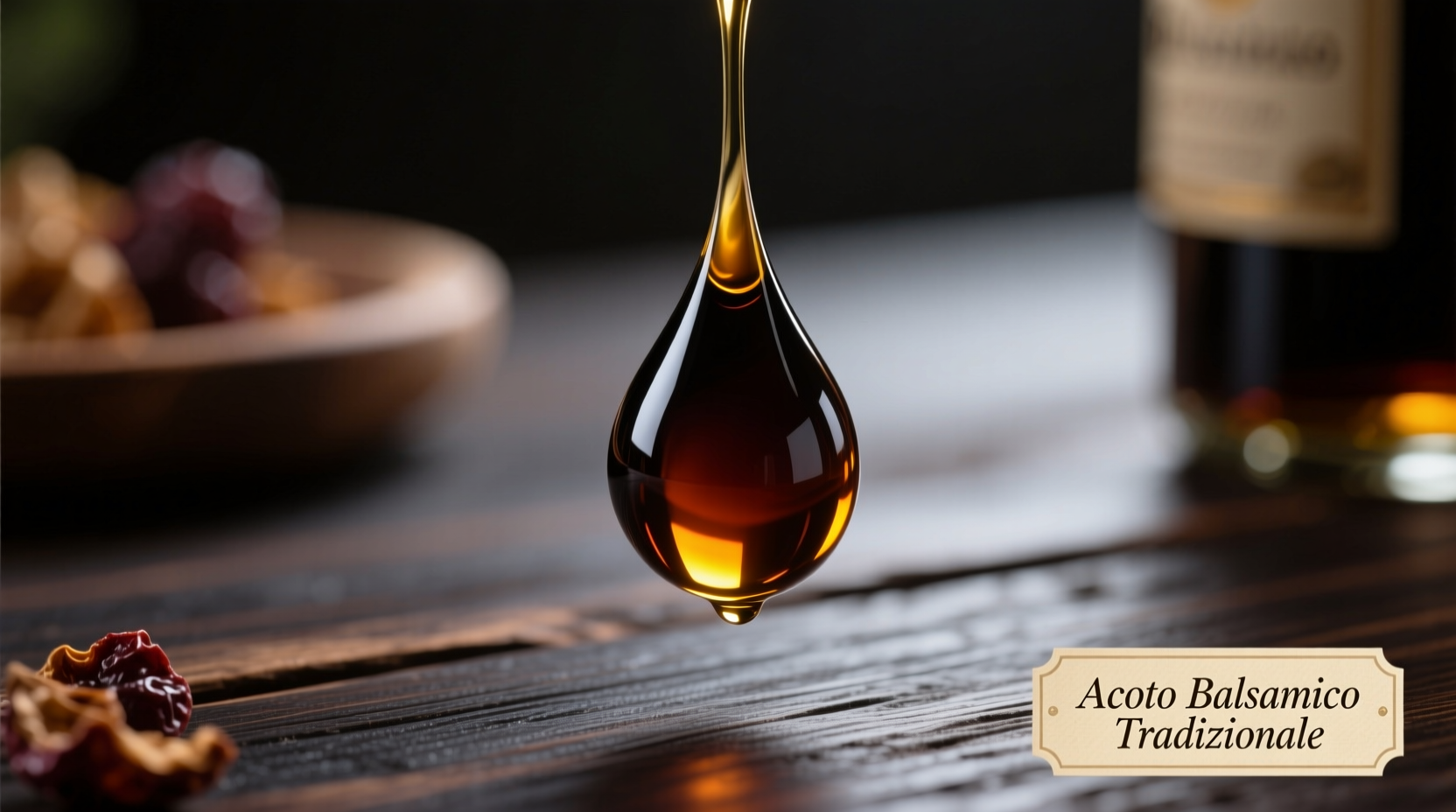Ever wonder why chefs reach for balsamic vinegar when they want to elevate a simple salad or transform a basic reduction? Understanding the distinctive flavor profile of this Italian treasure unlocks endless culinary possibilities. As a professional chef with expertise in European flavor traditions, I've spent years working with authentic balsamic vinegar and can help you recognize what makes its taste truly special.
The Signature Sweet-Tart Balance
What does balsamic vinegar taste like? At its core, traditional balsamic vinegar offers a harmonious interplay between sweetness and acidity. Unlike harsh vinegars that punch with pure sourness, balsamic delivers a rounded tartness balanced by natural sugars from reduced grape must. This creates a flavor experience that's simultaneously bright and mellow, with a lingering finish that enhances rather than overwhelms.
The finest examples showcase what Italian producers call agrodolce—the perfect marriage of sweet (dolce) and sour (agro). This balance makes balsamic vinegar incredibly versatile in the kitchen, working equally well drizzled over strawberries as it does deglazing a pan for steak.
How Aging Transforms Flavor Profile
Unlike most vinegars that degrade over time, authentic balsamic vinegar improves with age through a unique barrel-aging process. The flavor evolution follows a distinct timeline that directly impacts taste:
| Aging Period | Flavor Characteristics | Texture |
|---|---|---|
| 1-3 years (Balsamic Vinegar of Modena IGP) | Bright acidity with subtle sweetness, pronounced grape notes | Thin, similar to wine vinegar |
| 3-12 years (Traditional Balsamic Vinegar of Modena DOP) | Harmonious sweet-tart balance, complex fruit notes | Slightly syrupy, coats the spoon |
| 12+ years (Traditional Balsamic Vinegar of Modena DOP) | Deep complexity with notes of fig, cherry, molasses, and wood | Rich, velvety texture that lingers |
This aging process, documented by the Consortium for Protection of Balsamic Vinegar of Modena, transforms simple grape must into a culinary treasure through slow oxidation and concentration in a battery of progressively smaller wooden barrels. Each transfer imparts subtle flavor nuances from the different woods (oak, cherry, chestnut, juniper), creating the layered complexity that defines premium balsamic.

Balsamic Vinegar vs Other Vinegars: Key Differences
Understanding what makes balsamic vinegar taste different from other vinegars helps you use it effectively. While all vinegars share acidity as their defining characteristic, balsamic stands apart through its production method and resulting flavor profile:
- Red wine vinegar: Primarily sharp and acidic with wine notes but lacks natural sweetness
- Apple cider vinegar: Distinct apple flavor with a harsher, more pungent acidity
- Sherry vinegar: Nutty and complex but drier with less inherent sweetness
- Traditional balsamic: Balanced sweet-tart profile with rich fruit notes and syrupy texture
The critical difference lies in the production method. Authentic balsamic begins as cooked grape must (not fermented wine), which retains natural sugars that mellow during aging. This creates what food scientists call a higher Brix level—a measure of dissolved sugars that contributes to balsamic's distinctive mouthfeel and flavor balance.
When Balsamic Vinegar Shines: Contextual Applications
Not all dishes benefit equally from balsamic vinegar's unique flavor profile. Understanding its contextual strengths helps you use it effectively:
Ideal applications: Where its sweet-tart complexity enhances without dominating—drizzled over ripe strawberries, paired with creamy cheeses like burrata, or reduced into a glaze for roasted vegetables. The acidity cuts through richness while the sweetness complements natural sugars in foods.
Limited effectiveness: In dishes requiring sharp, clean acidity (like vinaigrettes for bitter greens) or where its distinctive flavor would clash (delicate fish dishes). For these applications, red wine or champagne vinegar often works better.
Flavor transformation through cooking: When reduced, balsamic vinegar concentrates its sweetness while mellowing acidity, creating a rich glaze perfect for meats or desserts. However, overheating can cause bitterness—never boil balsamic vinegar vigorously. The ideal reduction happens at low heat over 15-20 minutes.
Selecting Balsamic Vinegar by Flavor Profile
Not all balsamic vinegars taste the same. Your selection should match the flavor profile you need for your dish:
- For bright acidity: Choose younger commercial balsamic (1-3 years) with higher vinegar content
- For balanced flavor: Select Traditional Balsamic Vinegar of Modena DOP aged 3-12 years
- For dessert applications: Use aged Traditional Balsamic (12+ years) with its concentrated sweetness
Read labels carefully—only products labeled Aceto Balsamico Tradizionale di Modena DOP or Aceto Balsamico Tradizionale di Reggio Emilia DOP meet the strict production standards that guarantee authentic flavor development. Commercial products labeled simply "balsamic vinegar" often contain added sugars and thickeners that create an artificial approximation of the real thing.
Common Flavor Misconceptions
Several myths persist about balsamic vinegar's taste that can lead to disappointing results:
- Myth: All balsamic vinegar is thick and syrupy
Reality: Only traditionally aged balsamic develops this texture naturally through reduction during aging - Myth: Darker color means better quality
Reality: Some commercial producers add caramel coloring—authentic color comes from slow oxidation in wood barrels - Myth: Balsamic should taste primarily of vinegar
Reality: The best examples balance acidity with pronounced sweetness and complex fruit notes
Understanding what balsamic vinegar actually tastes like—rather than what marketing suggests—helps you select and use it properly. When tasting authentic balsamic, you should experience multiple flavor dimensions unfolding over time, not just a single-note sourness.











 浙公网安备
33010002000092号
浙公网安备
33010002000092号 浙B2-20120091-4
浙B2-20120091-4